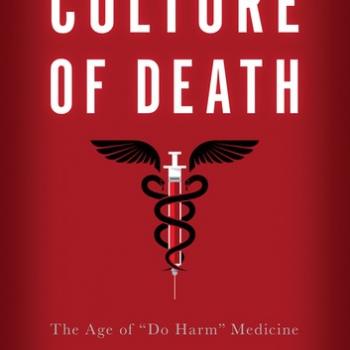(by Eric Phillips)
Our Epistle reading for this past Sunday included the well known verse that says, “We walk by faith, not by sight” (2 Cor. 5:7). In context, St. Paul has just assured his hearers that “if the tent that is our earthly home is destroyed, we have a building from God, a house not made with hands, eternal in the heavens” (5:1). That is, if this body dies (and we know that will happen some time), we have another one awaiting us in Heaven, in the Resurrection to immortality. But we don’t see it yet; all we see are the flaws and the gradual decay of this body and life. Thus we must proceed in the Christian life by the perception of faith, not of sight. That’s the basic meaning of this verse, but here’s a corollary meaning that can be very important to remember: if we walk by faith, not by sight, that means we can’t expect to see our faith, either.
Sometimes well-meaning Christians exhort other Christians to search within their hearts, to see if they truly have faith. “Do you really believe? How do you know you really believe? What convincing testimony can you offer?” But if it were necessary to see our faith before we could walk by it, then we wouldn’t be “walking by faith, not by sight,” would we? We would really be walking by sight. Self-examination of this kind is poisonous. It gets us into an endless, self-destructive circle, like a snake eating its own tail. “I have to see my faith, so that I can have faith in the things I can’t see.” Faith is not an object of sight, any more than sight itself is. Faith is an alternate means of perception. That’s why Paul instructs us to “walk by faith, not by sight.” It’s either-or. Faith allows us to perceive things that sight cannot perceive: things such as the Resurrection, and the Righteousness that is imputed to us in Christ. If we were impervious to death here and now, we wouldn’t need faith to perceive the Resurrection; simple empirical observation would do the trick. And if we were perfectly righteous in thought and deed, here and now, we wouldn’t need faith to understand that God has made us righteous. But we aren’t, so we do.
Faith is not an object of sight. Nor is faith an object of faith. Often Christians who face the kind of questioning I mentioned in the last paragraph, end up defending themselves by saying, “I believe that I truly believe,” or “I just know that I have faith,” which boils down to the same thing. But faith is not something that can be directly perceived by any mode of perception. Rather, it is itself a kind of perception. Trying to believe in faith makes no more sense than trying to see sight. Faith is not an object to be discovered, proven, measured, or any of that. Faith is not an object at all. Faith is a passive activity that perceives objects—just as sight is. They are parallel senses.
So if faith is not an object, I guess we should be asking, “What is the object of faith?” And now we have the right question. The objects of Christian faith are the promises of God as they are revealed to us in Holy Scripture: that we are forgiven all our sins, that we are the children of God, that we will rise again, that we will live forever in everlasting righteousness, innocence, and blessedness—all through the work of Jesus Christ our Lord, who has died for us and lives again for us, who has called us to faith and baptized us into His body, and feeds us with His body and blood. If someone suggests that you should be turning your eyes or your mind inward, to search your heart for this thing called “faith,” do not go on that wild goose chase. Instead, turn your eyes and your mind outward, to read and hear and consider the promises of God, the work of Jesus Christ, and the Sacraments by which He communicates His salvation to you. This is what you would do if someone suggested that you were blind, isn’t it? You wouldn’t try to study your eyes, or to remember occasions when you think you saw something; you would just open your eyelids and gaze on the world, and disprove the suggestion by actually seeing.












